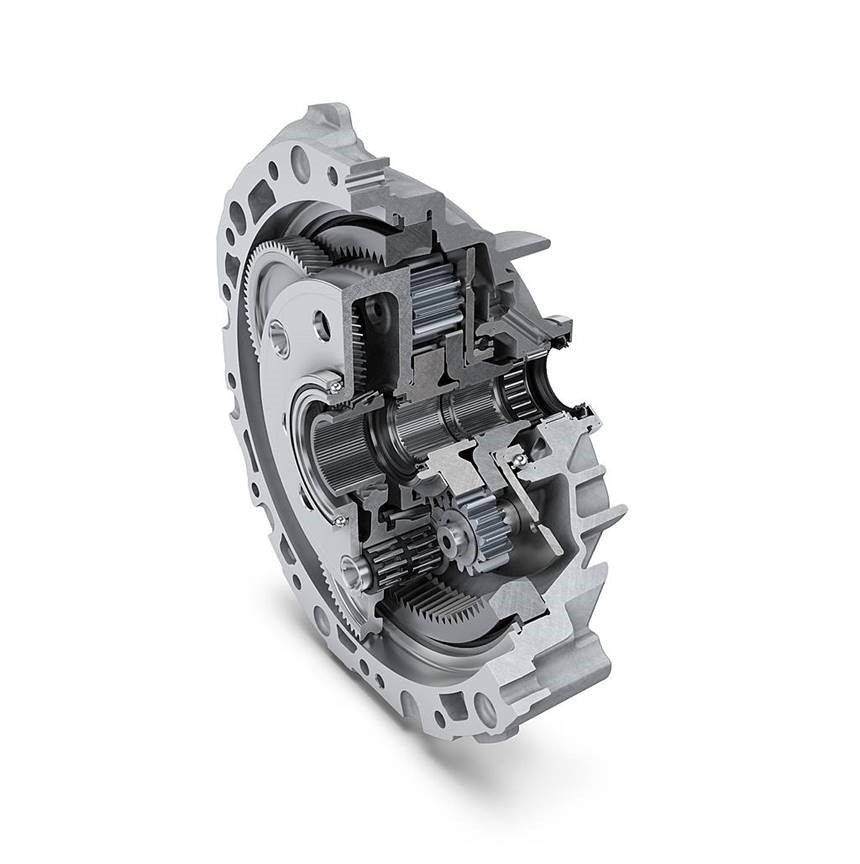A new urban vehicle concept was featured at the event. The Schaeffler Mover offers a flexible and emission-free platform for a range of different vehicle concepts. All the drive and chassis components are integrated in one unit, called the “Schaeffler Intelligent Corner Module,” to save space and enable vehicle maneuverability and passenger comfort. This concept is Schaeffler’s answer to mobility requirements in growing metropolitan areas.
This Module is installed in all four wheels and includes the wheel hub motor, wheel suspension including the spring system, and the actuator for the electromechanical steering system. The steering system of the wheel module is designed as an electromechanical steer-by-wire system. The wheel suspension design selected enables a steering angle of up to 90 degrees. This allows the vehicle to be maneuvered in narrow alleys and be parked in short parking spaces in order to let the passengers enter and exit. Its turning radius of less than five meters makes the vehicle extremely maneuverable in city traffic and even turning on the spot is possible.
An inside look at the wheel hub unit of the Schaeffler Mover.
The traction motor of the wheel module has been designed as a permanently-excited synchronous motor and is a variant of the wheel hub motor already developed by Schaeffler in a 2013 project. In the current design for the Mover, each of the four electric motors supplies a continuous output of 13 kilowatts and a temporary peak output of 25 kilowatts. The nominal torque of 250 Newton meters per motor can be doubled for short periods.
The Evolution of Clutches, Gears & Bearings
One of the main themes of the event was letting transmission engineers know that there was no reason whatsoever to panic. Matt Frary, vice president, business unit transmission applications, reassured the audience that despite all the electrification going on in the automotive industry—transmission components would remain vital for years to come.
Frary said that the main components of the transmission—gears, clutches and bearings—will be necessary in the future, but their complexity and design characteristics will change with the industry.
Matt Frary discussed the evolution of bearings, gears and clutches.
There will be fewer gears in an automobile in the future, but the gears that remain will be a higher quality product with unique properties. Bearings will need to perform at high speeds, high currents and produce less noise. Engineers will need to utilize more bearing test rigs to examine loading conditions and failure issues. In the case of clutches, engineers will optimize and redesign the components to make them less complex—remove hydraulic systems and focus on electromechanical automation.
A Look at the Future
The exhibition hall featured several key areas where the organization continues to grow and expand including urban mobility, the energy chain, simulation, powertrain, surface technology, engine systems and a large emphasis on digitalization.
Product Digitalization







